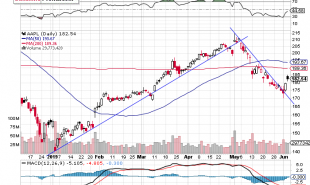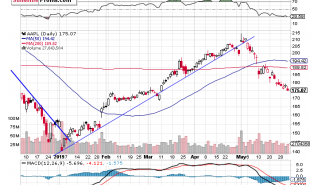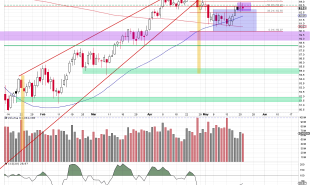
“Curiouser and curiouser!” Cried Alice (she was so much surprised, that for the moment she quite forgot how to speak good English).” This Alice in Wonderland snippet seems apt when considering the current state of relations between the U.S. and Russia seen through the prism of the dollar.
So how is this new relationship working? As an American executive in Russia, I can only shake my head in wonder and feel like I have dropped down the storied rabbit hole. Even from the American Chamber of (AmCham) in Russia, the view looking forward for American companies doing business for years, even decades in Russia does not look bright.
The head of the American Chamber of Commerce (AmCham) in Moscow recently commented on the effects of US sanctions, "The main concern of companies is sanctions, and not only those that already exist, but the threat of additional sanctions that may be. Sanctions would actually force all American companies to leave Russia, because they forbid us to work with banking systems, transportation by rail and prohibit buying oil, that is, production in Russia becomes de facto impossible”. He went on to say, "so far this is only a threat, but it exists and hangs in the air." Meanwhile, "business continues to work and grow - and even invest in Russia".
Possible new added sanctions were recently dreamed up and proposed by Senator Lindsey Graham and a group of US Senators, the proposal even has a nickname – “a sanctions bill from hell”. They would target Russian bonds (OFZs) and would not only affect Russia but the many holders of such bonds in the West.
The reason given by Senator Graham for these amped up sanctions is prescient, a form of punishment before the crime and well before the fact as he says "the current sanctions regime has failed to deter Russia from meddling in the upcoming 2018 midterm elections."
Thankfully, it looks like this alternative reality may not pass in Congress - not because it is odd or oddly thought through, but it looks to include restrictions on Russian sovereign debt transactions, which may indeed be a step too far. After all, if the Russian State Banks are sanctioned, it becomes problematic when having to settle debt and contractual obligations in dollars with Western counterparties. That would be a shot in the foot.
The threat of possibly increased sanctions or some part of the “sanctions from hell” have sent yields on 10-year OFZ bonds to two-year highs of 8 - 9% this past August and now in September. The Russian Government has shrugged off this effect and are not feeling any need to indulge in new issues, which leaves some profitable opportunities for market players to take on.
One of the visible consequences of the US sanctions frenzy is that the Ministry of Finance in principle supports de-dollarizing the Russian economy. This does not mean banning circulation of the dollar, but that it would no longer be the default medium for normal business transactions.. The Deputy Minister of Finance mentioned financial and trade settlements between third countries are to be carried out in their national currencies.
While the Russian Ministry of Finance has no specific plans or mechanism to de-dollarize, just the other day the head of VTB, Mr. A. Kostin voiced his personal vision for a plan to de-dollarize. According to him, his vision consists of three major steps.
The first step is the accelerated transition in settlements with foreign countries for export-import transactions to currencies other than the dollar.
The second step he proposes is to de-offshore the largest Russian holdings that are registered elsewhere and have them re-register in a Russian jurisdiction. This he feels will reduce complications in foreign jurisdictions already experienced by several companies, and the expectations of continued almost ritualistic goosing of sanctions by the US.
The third step would be for Russia to increase its use of Eurobonds instead of US Dollar denominated bonds.
Whether his visions will ever come to pass is of course debatable, especially when one considers that VTB today just in the Far East does 70% of its business with China in dollars, 8% in Yuan and 22% in rubles. There is a lot of challenging space to fill with other currencies. Still, it is a work in progress to be sure and the trend is certainly apparent.
Back in 2017 Russia’s ex-finance minister Kudrin stated that US sanctions would serve to facilitate the use of the ruble in international settlements and that Washington's policy toward Moscow will most likely increase the use of the ruble, even if it is comparatively more expensive.
The ruble has been bashed and battered for a while now, but recent growth in the Russian currency has helped the ruble-traded MOEX index reach an all-time high on September 17, 2018. The index rose to 2,390 points for the first time in history. Even the MOEX’s dollar-denominated RTS index also rose the same day reaching 1,111 points for the first time since August.
Still the specter of expected new US sanctions against Russia does put a damper on things, the element of unpredictability now governing US foreign relations makes doing any long term business planning anywhere rather risky. Perhaps Wonderland is a good metaphor for current relations with the United States, and not only for Russia. Alice: This is impossible. The Mad Hatter: Only if you believe it is.
Paul Goncharoff
First appeared here.







